Practical Advice for the Great Divide Mountain Bike Route
As my wheels rolled along its roads, the Great Divide Mountain Bike Route (GDMBR) offered constant reminders that I was not alone. I had come for this, in part, after a year of isolation that left me craving the community of a well-traveled route. I chatted with every cyclist I met and delighted in signs of their presence, from tire tracks in the dust to matter-of-fact greetings from convenience store employees, totally unfazed as I filled grubby arms with packets of mini donuts and powdered mashed potatoes.
I was one of a few thousand people to ride the GDMBR in 2021 alone. My experience was very ordinary, statistically speaking. Yet a long journey has a way of turning everyone into an expert. After 2,700 miles, about 1,600 solo and 1,100 shared with my husband, I am a connoisseur of the Divide’s quirks. I can go on and on about the many varietals of gravel (“chunky and lightly washboarded, with a not-so-smooth finish”), the predictable unpredictability of Rocky Mountain weather, and the ebb and flow of cheeseburger availability.
If you and I found ourselves chatting around a campfire and the Great Divide piqued your interest, I would offer the advice in this article. It turned out to be key in crafting the mood and rhythm I wanted for my trip. But people have ridden the Divide in almost every style and pace imaginable, on every kind of bike, with all kinds of gear and a wide range of experience levels. So take this advice in the spirit in which it’s offered: as an invitation to consider what you want from your own ride, and some practical tips to help you make it happen.
Don’t be afraid to go against the grain.
Traditionally the GDMBR runs southbound from Canada to Mexico. Starting in the mountains and finishing in the desert means it’s all downhill, right? (Just kidding — definitely not!)
Each year a small but growing number of renegades start at Antelope Wells in the south and pedal north, like salmon swimming upstream. I was one of them, hoping to arrive at the Canadian border shortly after it opened to tourists for the first time in over a year.
During my original research, riding NOBO (northbound) sounded scary. Seasoned bikepackers noted that winds blow from north to south and climbs are steeper on the southern side. That sounded bad. Would I be fighting my way north against constant unrelenting headwinds and unrideable climbs?
As it turned out, not really. Though I’ve never ridden southbound to compare, riding northbound worked fine for me. I did fight nasty headwinds in parts of Wyoming and southern Montana and I certainly pushed my bike up some steep climbs, but for every mile of headwind or hike-a-bike, I also enjoyed hours of friendly weather and gradual grades. Judging from roadside chats with southbounders, they had their share of headwinds and steep climbs too. It seems, at least for those of us not racing, that northbound-specific difficulties are lost in the noise of other variable conditions.
Riding northbound has its own advantages, even in a normal year when borders are open. If an earlier start (late May or early June) works better for your schedule, you’ll have a little longer — until southern Colorado — before worrying about lingering snow in the mountains. Thanks to New Mexico’s remote and challenging roads you’ll have some of the longest food and water carries and toughest climbs behind you early. And you’ll begin in the desert and finish in the most dramatic mountains on the route, the Canadian Rockies.
Socially speaking, riding northbound has its own flavor. You may leapfrog with a fellow northbounder every few days, but you’ll cross paths with a southbounder every few hours in the height of riding season. This creates a fun communal sense that many people are out on the route, but you’ll only see most of them once. Pro or con? That depends on your style.
Ultimately, the hardest part about riding northbound may have been mentally reversing all the directions and waypoints! Fortunately, the Adventure Cycling maps and GPX data are both available in northbound versions, but the McCoy Guidebook and a majority of riders’ journals are not. As a bonus, you’ll get to know the route a little better through the mental effort of reversing these narratives.
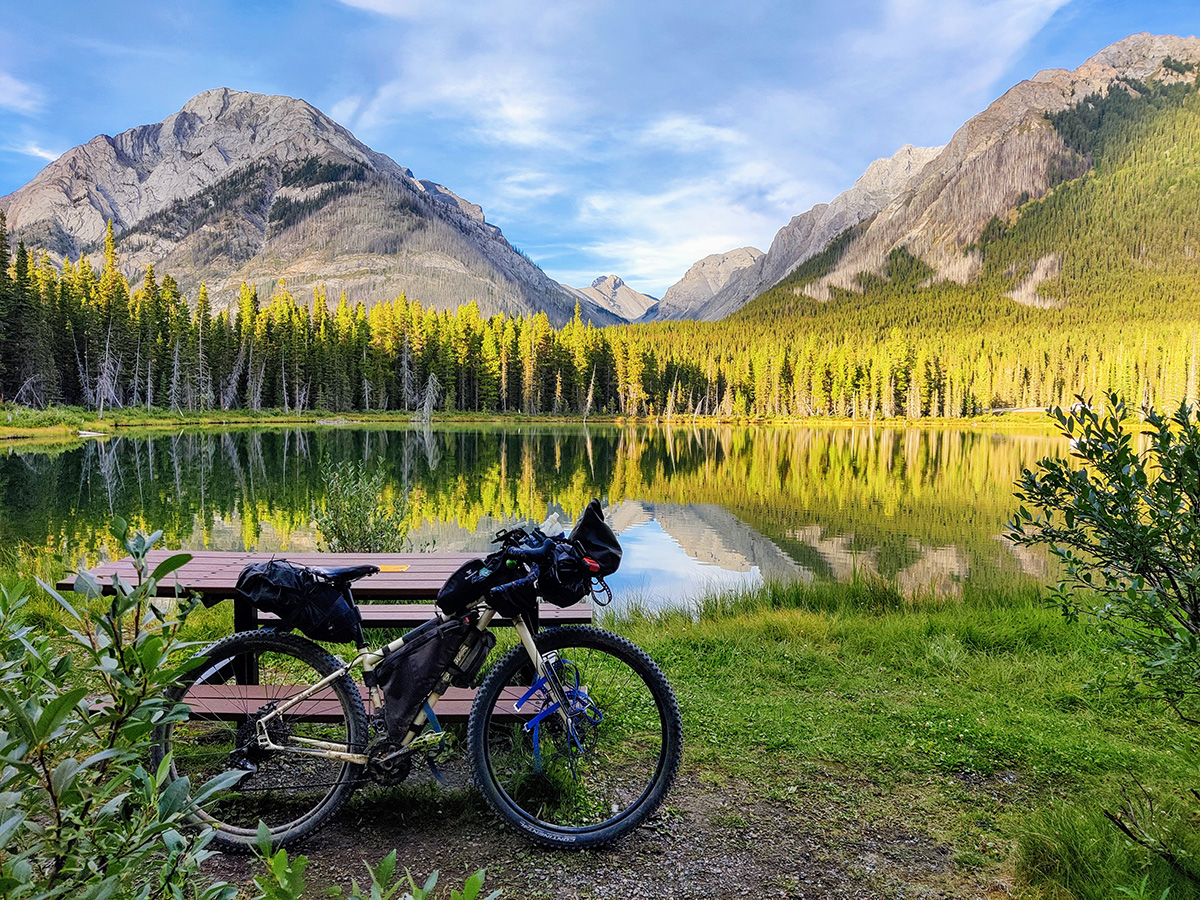
Budget extra time, but not because you’re slow.
“How long will it take?” is perhaps the most common question would-be GDMBR riders ask. It’s tough to answer, in part thanks to all the speedy folks who race the Tour Divide. The winner will likely finish at the Mexico border around two weeks after they start from Banff! That pace is not attainable, and certainly not enjoyable, for almost all of us mere mortals.
For those of us riding at “touring pace” — sleeping more than a few hours each night and sometimes eating food while not pedaling — the range is still large. Fast-and-light enthusiasts might aim to ride the Divide in one month, and lovers of leisurely side trips and relaxed mornings could easily fill three.
My own ride spanned two months, which is a smidge toward the relaxed side of typical. I averaged 50 miles per day with a rest day roughly once each week, with a longest day of nearly 80 miles and a shortest of 30. I certainly could have ridden faster and sometimes felt tempted, but the GDMBR reinforced an important lesson I’ve had to re-learn several times: the ideal pace of a long ride is about more than physical endurance and mental grit.
If you get a jolt of motivation from aggressive goals and perhaps have a short memory for suffering, you might be tempted to compress your GDMBR itinerary. I’m not one to discourage it; summer days are long and the miles are waiting! But it’s important to know that there’s a cost to this approach. If you’re looking for an unhurried experience, here’s my advice: build in a week more than you think you’ll need, especially if you’re new to long trips, unpaved riding, or both.
Lest you assume this is a vote of no confidence in your abilities, let me clarify. Yes, having more time means you can ride slower, stop earlier, and rest more. No shame in any of that! There are also logistical benefits: you can wait out a storm, wait for the post office to open, or detour to fix a mechanical issue with (slightly) less stress.
Perhaps most importantly, slack in the schedule allows for savoring the simple joys of the Divide, which are just as resistant to advance scheduling as the challenges. When it hurts to tear yourself away from the perfect campsite or your new friends want to stay one more night in a pleasant town, you’ll feel free to indulge. There were times when the freedom to throw my daily mileage goal out the window and make the most of an unexpected opportunity felt like the sweetest luxury in the world.
“But,” I hear you saying, “I have limited time off from work/school/life.” Completely understandable, and you’ll have to decide what feels best to you. Some people begin with a “see how far I can get” attitude and prioritize a pleasant pace over finishing the whole route. Others set an aggressive goal and relish in rising to the occasion.
Many people ride shorter sections as time allows, which is an excellent strategy. A number of section riders told me, with some envy in their voices, “I wish I had time to ride the whole thing like you are.” Sometimes though, I thought they had the right idea. Section riders can choose a more optimal weather window, still enjoy many of the benefits of a complete thru-ride, and probably remember each day a little more clearly when all is said and done.
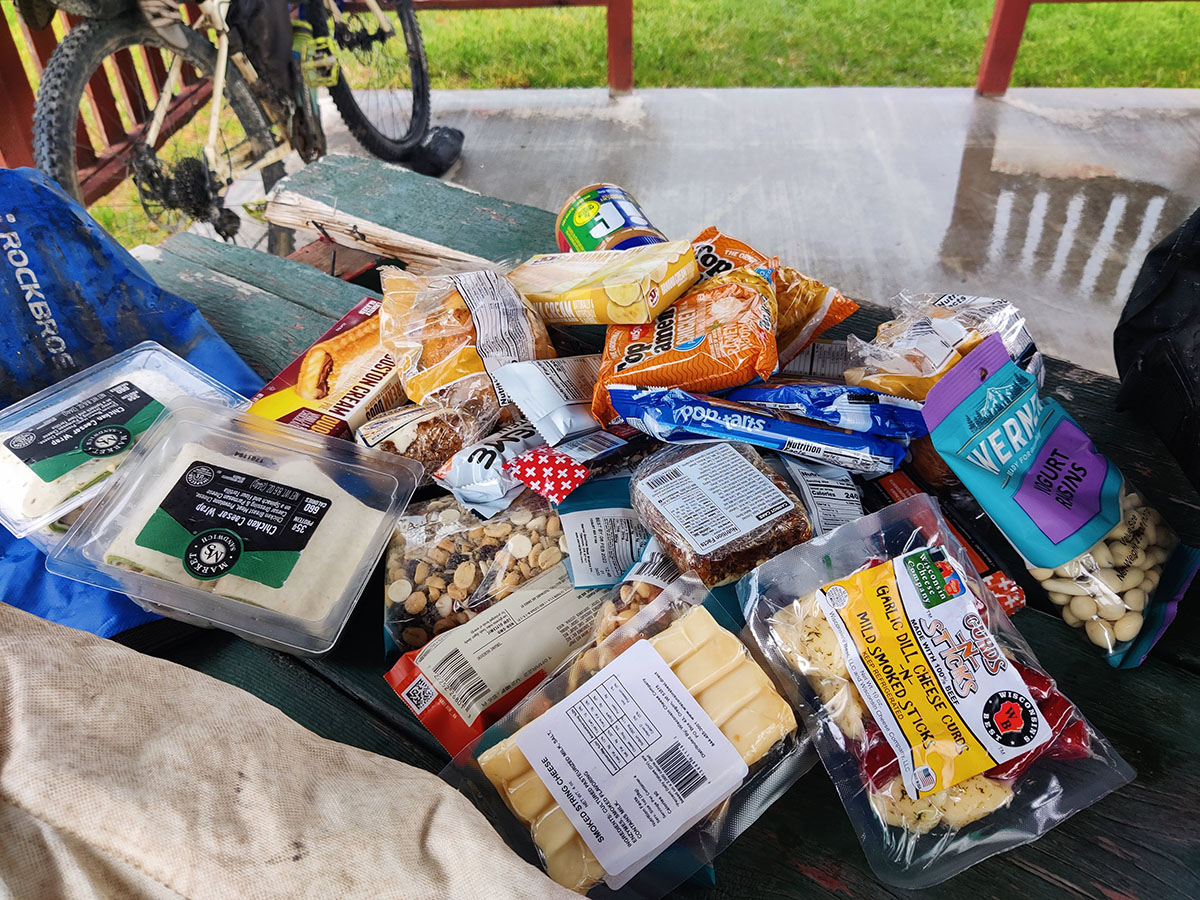
Pack light, whatever that means to you.
One sunny and slightly smokey Wyoming afternoon, I crossed paths with two southbound riders in the space of a few hours. One sported an ultralight racing kit; I almost mistook him for a day rider. The other traveler rocked four fully loaded panniers. Both were, at the time, smiling. It seems you can ride the GDMBR with just about any gear setup.
My own strategy — a lightweight-ish gear list crammed into a soft-bag bikepacking setup — seemed to be a common compromise. I also saw plenty of rear racks with small panniers, or simple dry sacks and rubber straps. Fully loaded four pannier setups were less common and some of those riders took paved alternates around the roughest sections, but they seemed to still be having fun. If you do run a rack on the Divide — a totally reasonable way to go — make sure it’s a sturdy one and dab some threadlocker on those bolts so they don’t rattle loose when you least expect it.
The biggest benefit of a bikepacking-style gear setup might be the difficulty of fitting everything in. The argument for packing light makes itself on the steep climbs of the Gila, high passes of the San Juans, and challenging trails of Montana. Yet there are also many evenings to be enjoyed at camp, ideally in relative comfort. The elusive goal of the human-powered traveler is as obvious as ever: carry everything you need and need (or at least really enjoy) everything you carry.
Especially if the Divide is your first long-haul ride, it can be hard to know in advance what gear will end up languishing in the bottom of your bags. Fortunately you can make changes as you go. If you haven’t used an item in a week and it’s not intended for different conditions up ahead, consider mailing it home from the next post office you pass. There’s one in every town and they’ll have boxes and tape strips for sale. Just show up with an armload of stuff and walk out a few pounds lighter.
Similarly, if you’re on the fence about a “nice to have” item while packing, leave it with a helpful friend. You’ll probably forget all about it once you start but if you don’t, they can mail it to you via General Delivery. Even better, find a business you’ll be stopping at (RV park, hostel, general store) and call to see if they’ll hold a package for you; their hours are probably more flexible than the local post office. This also works well for sending yourself resupply packages of hard-to-find food and other consumables along the way.
Before you pack or mail yourself every last item you could possibly need, remember that you’re not venturing into uninhabited wilderness. You’ll pass a small town every three to four days at most, usually more often, and a large town or city every week or two. Food, toiletries, laundromats, bike parts, and even outdoor gear are easy enough to find, especially if you’re not too picky.
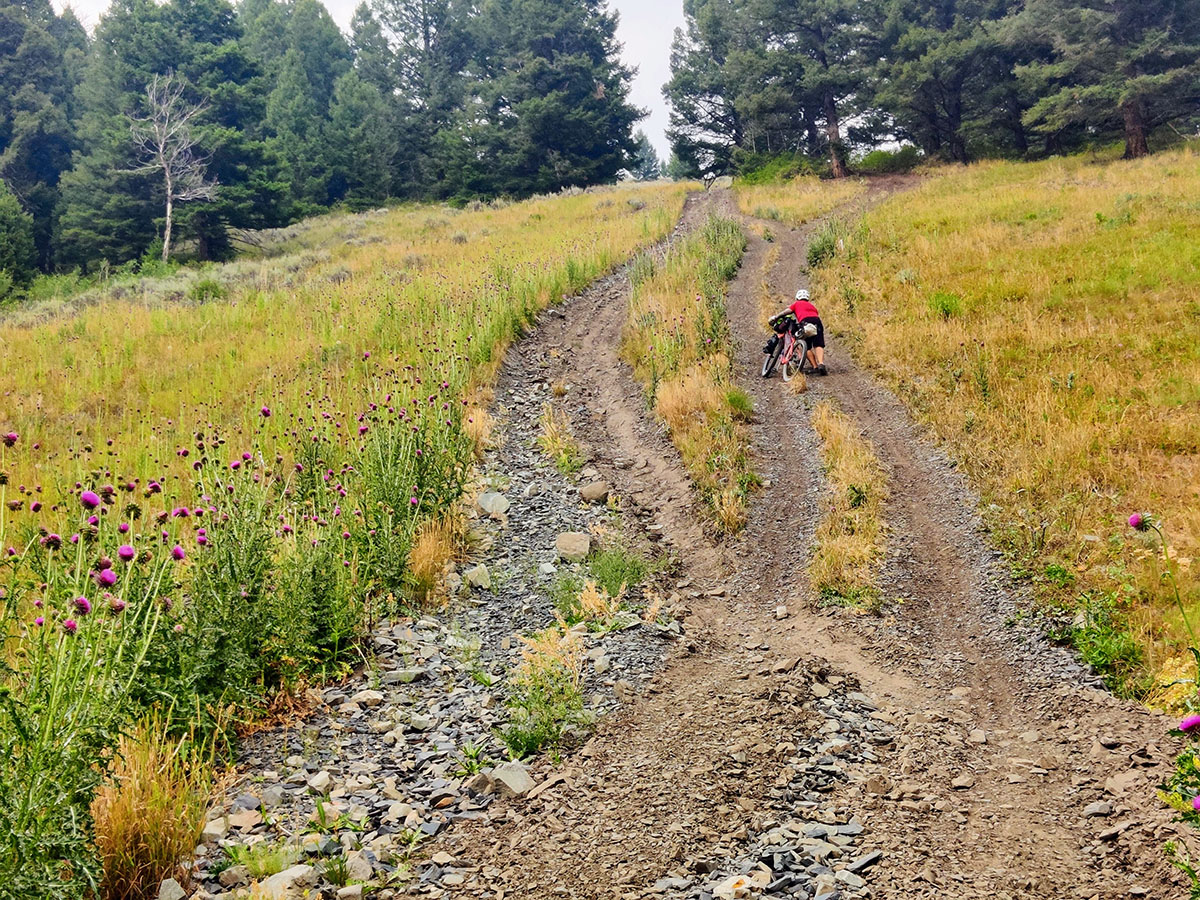
Resist the town vortex, at least sometimes.
After a few days out in the woods, few things compare to the joy of rolling your hungry, grubby self into the oasis of a small town. A restaurant and motel — and, heaven on earth, a grocery store! — can feel like the only things you’ll ever need again in this lifetime.
Hence the town vortex. Maybe it’s the physical comfort, social contact, or the feeling of achieving a measurable milestone of forward progress. Probably it’s mostly the food. Whatever the reason, it can be hard to drag ourselves away from a pleasant town once the chores are finished. Thus many Dividers hop from town to town, rolling in during the late afternoon and succumbing to the temptation of a comfy motel room for the night.
I have nothing against comfy motel rooms! In fact, I adore them. But I do want to offer a suggestion that worked well for me: Try, at least sometimes, to ride through towns and camp outside them. If you plan to hit town in the middle of the day and mentally prepare to pedal out by mid-afternoon (after a hearty lunch, of course) it’ll be easier to resist the vortex. You’ll save a lot of money too! A room can easily set you back $120 or more in some towns, and finding one at the last minute can be stressful.
You can leave many towns on the Divide and be on public land within ten to twenty miles. The GDMBR passes through a smorgasbord of National Forest land ideal for free camping, and I spent approximately half my nights on the Divide taking advantage of it. Some were mandatory — no towns within reach — but many were by choice. There are opportunities throughout the whole route, but I thought northern New Mexico and the national forests of Colorado were especially delightful for their frequent, scenic, and grizzly-free camping options.
On a fuzzier note, camping more often can make a big difference in the mood of your ride. For some of us, the bustle of towns can feel like a little much after so much open space. If you listen to your mind and body, you may be able to use camping as a tool to find your own rhythm. Town luxuries are even sweeter after a few nights out, and a quiet night under the stars can be even more rewarding after spending time in town.
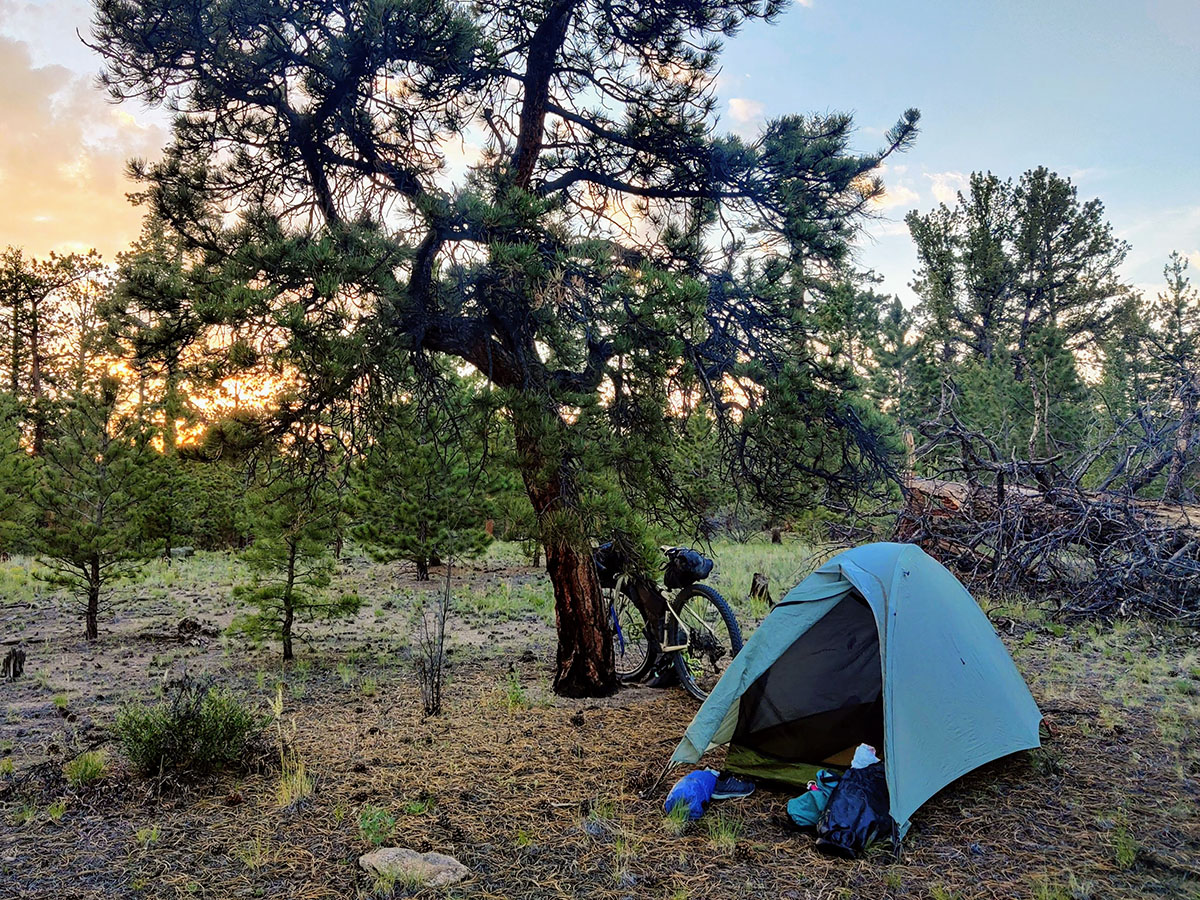
Enjoy wild camping, but not at the places marked on the maps.
Dispersed camping, sometimes called wild camping, is one of my absolute favorite ways to camp. It’s more peaceful than a developed campground, offers more flexibility in daily distance, and costs zero money. Despite the lack of amenities like picnic tables and toilets, I’ll take a quiet night of dispersed camping over a busy campground almost every time.
At first I expected to do my dispersed camping at the little brown tent icons marked “informal campground” in the Adventure Cycling GPX data. But often I would roll up and find a large dirt pullout, sometimes filled with RVs and perhaps littered with bits of broken glass. Eventually, I realized these sites are meant for RVs and car campers, and cyclists can do better. An “informal campground” means you’re on public land — either National Forest or Bureau of Land Management — where dispersed camping is legal. If the marked spot doesn’t have the right vibe you can probably find another that does.
Especially when riding solo, my key to a relaxing night is being invisible from the road. I know most people are good but my primal wiring runs deep. I sleep better when I don’t have to wonder at 2 AM whether the driver of that passing truck saw my tent. So I nestle myself into the landscape in sneaky places — on top of a small hill, up a gentle ravine, or deep into sparse trees off a faint doubletrack — and enjoy the feeling of melding into natural surroundings for a night. If you can’t find good cover, a helpful tip is to camp on the insides of curves and uphill rather than downhill from the road. These spots are less likely to be swept by passing headlights.
An important reminder that you’ve surely heard before: Leave No Trace skills are essential for this type of camping. This includes pitching shelter on a durable surface like dirt or pine needles instead of living plants, skipping a campfire if there isn’t already a fire ring or if a fire ban is in effect, packing out all trash and food scraps, and digging a proper 8” deep cathole if you can’t make it to the next pit toilet. Since much of the Great Divide is in bear territory, you’ll also want to use bear-aware camping practices.
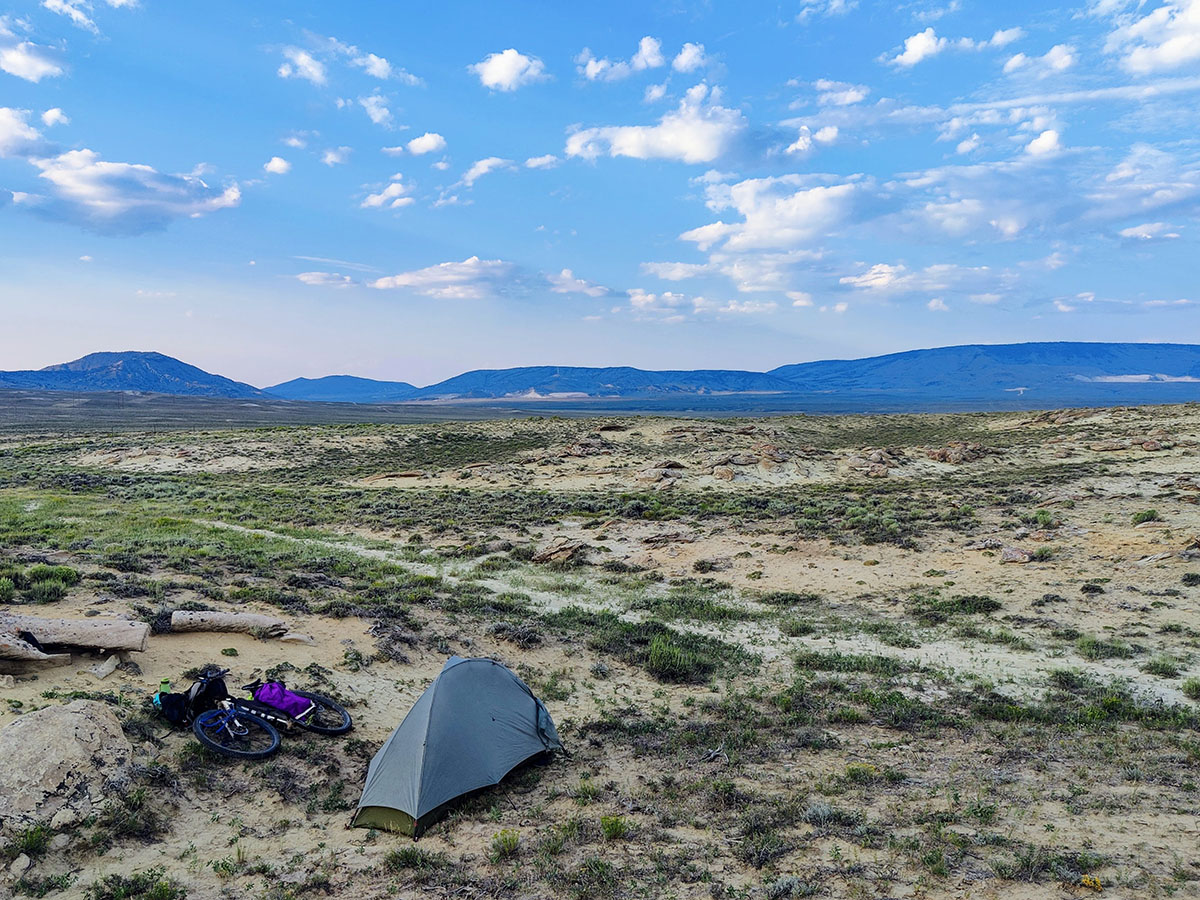
Stay flexible and embrace the variety.
The GDMBR is a constantly changing patchwork of roads, communities, and terrain. This keeps life interesting over thousands of miles but also requires careful attention. Twice-daily restaurants will transition to three-day food carries (and vice versa), plentiful surface water eventually gives way to the longest dry stretch on the route (hint: it’s not the Basin), and abundant camping vanishes unceremoniously into long sections of barren private land. As soon as you think you know what to expect, you’ll be surprised.
The best advice I can offer is to embrace just-in-time planning. It would be maddening and futile to precisely plan each day in advance but you also don’t want to roll out of town unprepared for what lies ahead. Even experienced riders need to remind ourselves of this balance from time to time.
To give some structure to this process, answer these questions during each town stop or shortly before:
- How many days until my next food resupply, and are there any restaurants in between?
- How far until the next water source, and are there any extra-long water carries coming up?
- What are some good potential camp locations for the next couple of nights, and are there any long stretches of private land?
- What’s the weather forecast?
- Any route closures or detours in the next section?
- If you want a motel room in the next town, is it busy enough to require a reservation in advance?
Just-in-time planning is helpful on the road, but you’ll also want to make smart decisions about gear before leaving home. Most importantly, you’ll need a flexible cargo setup with variable capacity for food and water. I usually carried one to two days of food but stretched to four days in northern New Mexico. Two liters of water was plenty in most places, but I carried six liters in the Great Basin and a challenging eight liters in the Gila National Forest south of Pie Town, NM. Details will depend on your pace, direction, and seasonal conditions, but all riders face a range of resupply needs throughout the route.
There are plenty of ways to deal with this variety, but my strategy involved two 5L dry bags strapped into gear cages on my fork. I stuffed them to the max with food and water when necessary and squished them down to almost nothing when not needed. My extra water capacity came from two collapsible Platypus bottles and the 3L dirty bag from my water filter setup. For the times I didn’t want to deal with making everything fit on my bike, I carried a very helpful small stuffable backpack.
Though changing conditions kept me on my toes, mentally speaking, there was something emotionally freeing about it too. The weather, terrain, and my own mood all ebbed and flowed from one day and one mountain pass to the next. As sure as a perfect easy day could turn challenging, a challenge always eventually resolved. The more I learned to just relax into the rhythm of the ride, the better I felt.
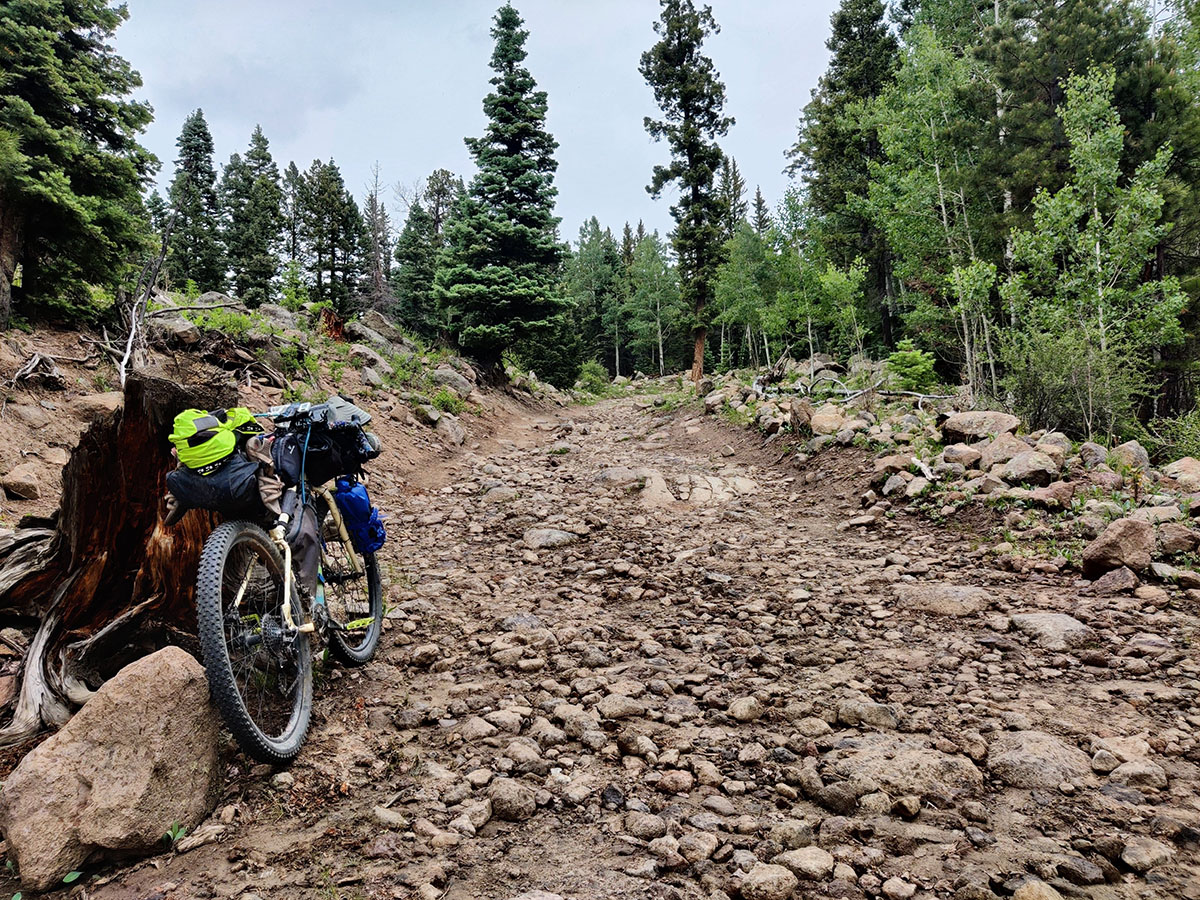
Final Tips
Here are a few more practical ideas to tuck away in your mental seat bag or pannier for your GDMBR ride.
Take daily notes and pictures, and don’t forget to include people you meet and places you stay along the way (in other words, not just scenery). Those early days on the Divide feel unforgettable but after a few weeks, they have a way of blurring together.
Make the most of healthy food when you can find it. In some sections of the Divide, you’ll eat from gas stations for days. Even delicious greasy town meals can lose their appeal after a while. When you do find a grocery store with a good selection, check in with your body to see what it’s craving. You might be surprised to find that the answer is a big crisp salad!
Enjoy cyclist-only lodging and camping. Some of the most iconic places on the Divide — Toaster House, Brush Mountain Lodge, Llama Farm, and others — are legendary for their hospitality and the sense of community they foster. Many of my strongest connections and deepest conversations were enjoyed at these gathering places. Even when I was initially tempted to skip the social scene and camp alone in the woods instead, I always left feeling recharged and glad I had stopped by.
Make friends with hike-a-bike. There’s no shame in getting off to walk on a route like the Divide. Walking and pushing up a hill you can barely pedal is a smart way to save energy, prevent overuse injuries, and move cranky muscles and joints through a different range of motion.
Keep up-to-date on route conditions. The GDMBR is a long stretch of wild land and things change fast out there. This Facebook group and this one are active sources of information on water sources, fire closures, trail magic, lost and found gear, and all kinds of other helpful things. Be sure to also check the Adventure Cycling addenda for route detours and updates to the services listed on the maps.
Most importantly, try not to stress! When riding such a well-documented route it can feel like you’re supposed to know everything in advance and execute flawlessly. I would encourage you to soak up as much information as you want for both planning and entertainment purposes but don’t feel pressured to implement every bit of it. After all, it would be boring to have everything dialed from the very beginning!
There’s nothing quite like the feeling of getting on your bike, pointing your wheels toward a distant international border, and starting to pedal. As a naturally resilient and resourceful human, you can feel good about your ability to work through whatever lies ahead. May the wind be at your back, the air clean and clear, and the climbs gradual. And even when none of those things are true, may you still find confidence, contentment, and community on the Great Divide.

